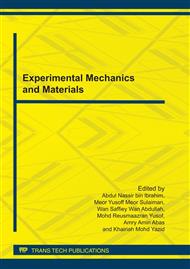p.1
p.7
p.13
p.19
p.22
p.28
p.35
p.41
A New Moiré Grating Fabrication Technique Using Hot Embossing Lithography
Abstract:
Moiré grating is a basic optical component, and can be used in various moiré methods. The conventional grating fabrication technology is based on photolithography and holographic interferometry, however, it requires complex optical components and is very difficult to put into practice. In this study, nanoimprint lithography (NIL), or rather, hot embossing lithography (HEL), is proposed for producing high frequency grating. Compared with silicon mold, holographic moiré grating mold costs less and is not easy to break, thus is chosen to be the mold in HEL. Using this mold and the hot embossing system, the grating structure can be transferred to the polymer after HEL process. Through a number of experiments, the process parameters were optimized and gratings were successfully fabricated. The multi-scale morphology of the fabricated gratings was then characterized by scanning electron microscope (SEM), atomic force microscope (AFM) and moiré interferometry. The microscale images observed by AFM and SEM show the regulate dots with equal spacing and the macroscale moiré patterns illuminate the excellent qualities of fabricated grating in a large area. The successful experimental results demonstrate the feasibility of the grating fabricated by HEL for the moiré measurement.
Info:
Periodical:
Pages:
7-12
Citation:
Online since:
July 2011
Authors:
Price:
Сopyright:
© 2011 Trans Tech Publications Ltd. All Rights Reserved
Share:
Citation:


